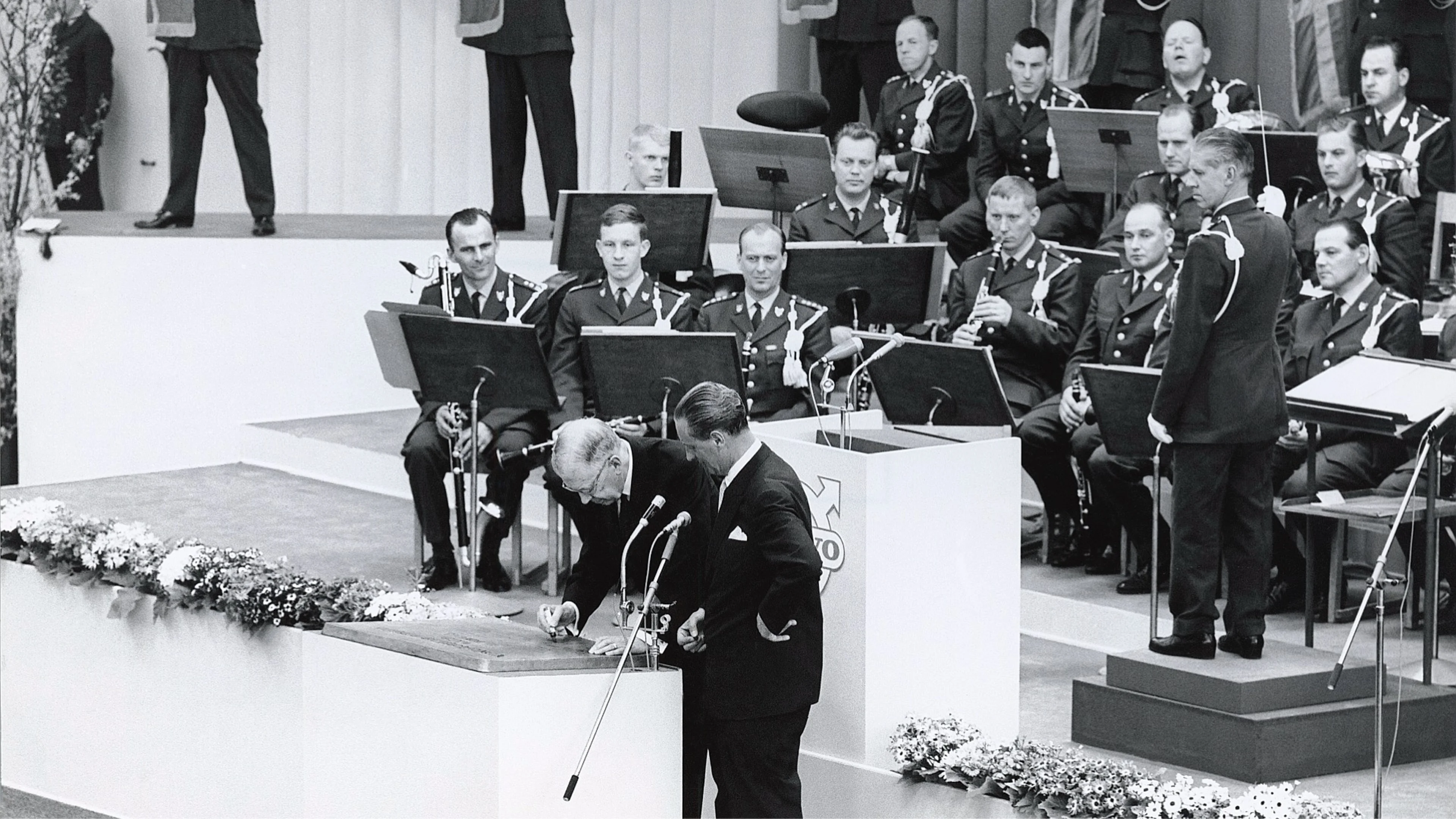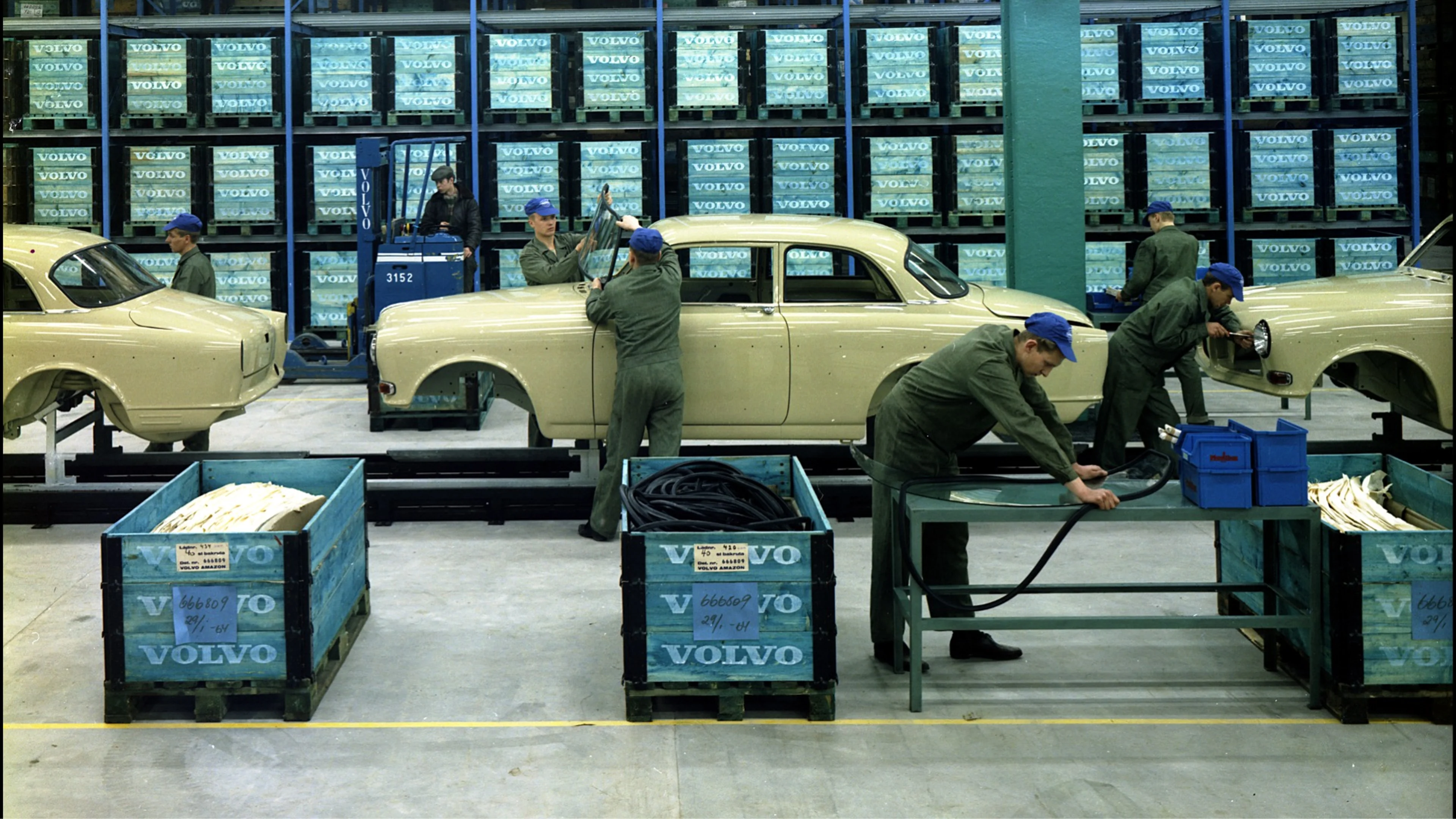Six decades of records, diligent work and mega moves
At 60, our plant in Torslanda, Sweden is more vital and efficient than ever. And with exciting investments on the way, it is poised to reach new heights in an all-electric future.

Gustaf VI Adolf and Gunnar Engellau at the opening of Volvo Torslanda April 24, 1964.
The year is 1964. Bob Dylan declares ‘The Times They Are a-Changin’, and indeed they are in Sörredsdalen on the island of Hisingen. The demand for cars had been skyrocketing for years, fuelled by a higher standard of living. On April 24, when Volvo Car Torslanda (VCT) is inaugurated by Swedish king Gustaf VI Adolf, it is the biggest industrial investment in Swedish history.
With a capacity for building up to 200,000 cars a year, the plant pushes the boundaries for the company’s ability to develop and manufacture cars in high volumes. Soon, it becomes the largest single workplace in the country, with over 11,000 employees.
Fast forward to today, 60 years later. The plant has an annual production capacity of 290,000 cars – or 60 cars per hour – and operates on three shifts. Around 6,500 employees work diligently every day to make sure things go as planned.
But the Torslanda plant is not just about running things smoothly: it also plays a crucial role in our plans to become a pure electric car maker by 2030 and to achieve net-zero greenhouse gas emissions by 2040.
Almost every second car rolling off the line today is electrified. By the end of the year, we expect six out of ten cars leaving the plant to be electrified. Just a few weeks ago, we waved off the last diesel car, and already in 2021, the plant became our first climate neutral plant.
“When we now celebrate 60, it’s tempting to look back at all we have accomplished through the years, but it’s just as inspiring to gear up for what’s ahead,” says plant manager Magnus Olsson. “And as we’re shifting our focus to making fully electric cars, we will continue improving our production efficiency and investing in technology that makes sure we’re fit for the future.”
Mega moves coming up
So, what are we doing to get the plant ready for the challenges ahead? Well, the facilities are currently being transformed through a multi-billion investment. We’re implementing mega casting, fully refurbishing the paint and final assembly shops, and establishing a new battery assembly plant.

Gunnar Engellau with a Volvo 1800 S, at the Torslanda factory, 1964.
Let’s take a closer look at what all this actually means. Mega casting is a manufacturing process where a great deal of stamped parts is replaced with one single, large aluminium casting. This reduces weight, which in turn improves the energy efficiency and the electric range of the car. It also reduces complexity in the manufacturing process.
The new battery assembly plant will integrate battery cells and modules in the car floor structure, while the assembly shop is refurbished and adapted for the manufacturing of our next generation fully electric cars.
Finally, the paint shop gets new state of the art pre-treatment machinery which is expected to continue the ongoing reduction of energy use and emissions – all geared towards our work to consistently cut carbon emissions.
A selection of milestones
- 2024 Last diesel car rolls off the line
- 2023 Nine million cars produced
- 2022 Announcing SEK 10 billion investment for next generation fully electric cars
- 2021 Becomes our first climate neutral car plant
- 2014 New body plant inaugurated on the 50 year anniversary
- 2012 Construction of new body plant starts
- 2008 Six million cars produced
- 2005 New production record – 184,293 cars in one year
- 2001 Gets major investments for the production of the XC90, and a significant capacity increase
- 1998 Environmentally certified as per ISO 14001
- 1995 Chosen as Europe’s third best car plant, and becomes ISO 9002 certified
- 1991 A new paint shop is inaugurated and becomes the cleanest in the automotive industry
- 1981 Using surplus heat from oil company BP significantly reduces oil consumption in the plant
- 1976 Three million cars produced
- 1973 The first robot for spot-welds becomes operational
- 1964 Torslanda plant is inaugurated by King Gustav VI Adolf